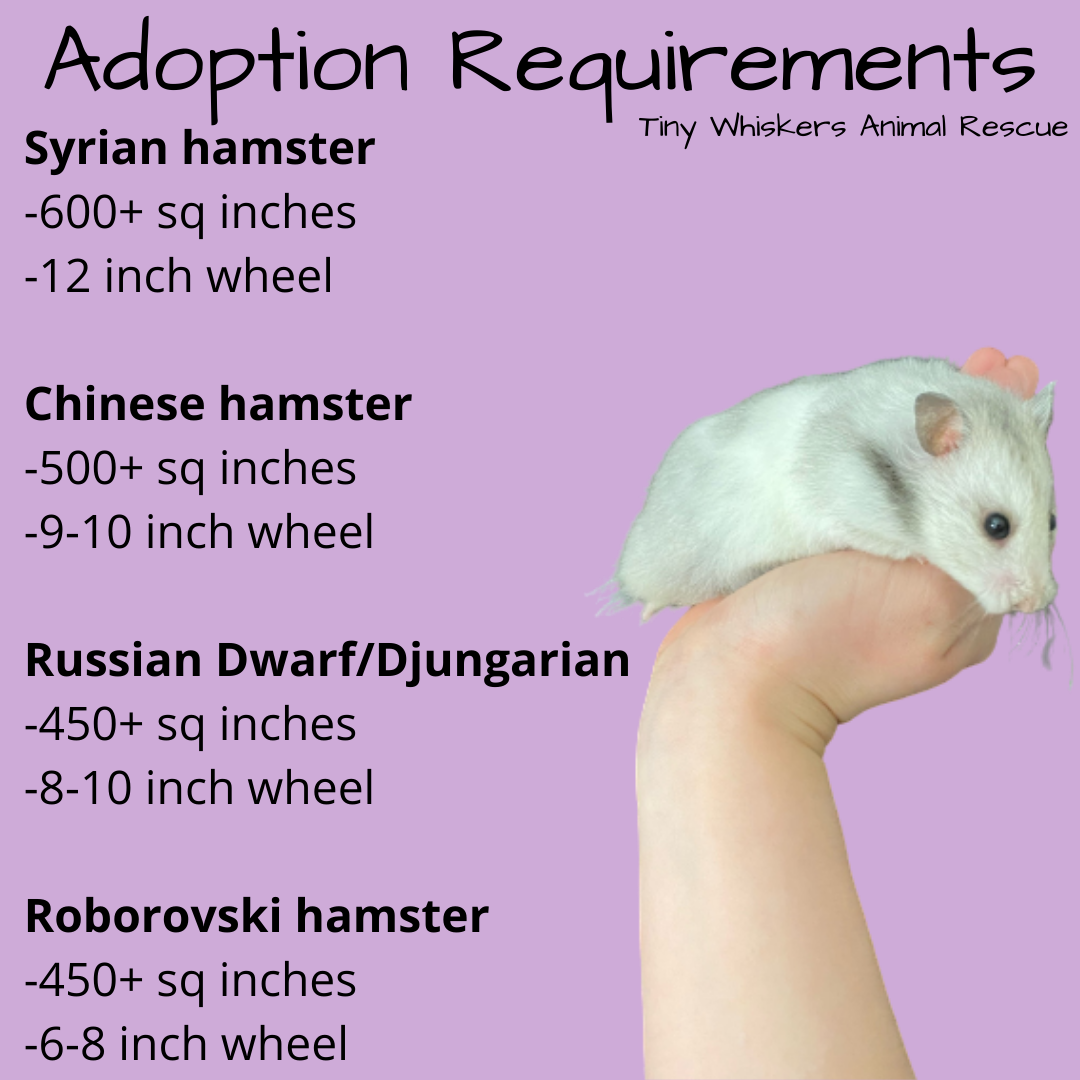Key Takeaways
-
Adopting a Chinese hamster from a rescue group can be a rewarding experience, offering a second chance to a small pet in need.
-
The initial adoption fee for a Chinese hamster typically ranges from $10 to $30, with additional costs for housing, bedding, and food.
-
Chinese hamsters are low-maintenance and quiet pets, making them good companions for those with limited space.
-
The average lifespan of a Chinese striped hamster is about 2 to 3 years, with proper care.
-
Before adoption, ensure you’re prepared for the responsibility of pet ownership by understanding the needs and characteristics of Chinese hamsters.
Welcome to the World of Chinese Hamsters!
If you’re considering a pint-sized companion, adopting a Chinese hamster can be an excellent choice. Known for their docile nature and small stature, these little creatures can bring a lot of joy into your home. But before you get carried away by their cuteness, it’s essential to understand what goes into adopting and caring for one of these furry friends.

“Tiny Whiskers Animal Rescue” from tinywhiskersanimalrescue.tumblr.com and used with no modifications.
What to Expect When Adopting from a Rescue Group
Adopting a Chinese hamster from a rescue group isn’t just about giving a pet a second chance; it’s about making a thoughtful decision that matches your lifestyle. Rescue groups often provide valuable insights into the hamster’s personality and health, ensuring you’re fully informed before bringing your new pet home.
Moreover, adoption from a rescue group supports their mission to help more animals in need. It’s a way to contribute to animal welfare while finding a pet that’s looking for love and care.
Initial Adoption Costs and Ongoing Care Expenses
Adopting a Chinese hamster comes with initial costs that include the adoption fee and the essentials to set up a suitable habitat. Here’s a breakdown:
-
Adoption fee: $10 to $30
-
Cage or enclosure: $20 to $50
-
Bedding: $5 to $15 per month
-
Food and treats: $10 to $20 per month
-
Exercise wheel and toys: $5 to $25
Remember, these are estimated costs, and prices can vary depending on where you live and the quality of products you choose.
Finding Your Fluffy Friend
Finding the right Chinese hamster is a journey that requires patience and research. Start by looking for rescue groups that specialize in small pets. These organizations often have experienced staff who can guide you through the adoption process.
Understanding the Adoption Process
-
Research local rescue groups and their adoption policies.
-
Visit the rescue to meet potential pets and ask about their history and health.
-
Fill out an adoption application, which may include questions about your living situation and pet care experience.
-
Be prepared for a home visit from the rescue group to ensure your environment is safe for a hamster.
-
Once approved, pay the adoption fee and take your new pet home with a clear understanding of their care requirements.
Adopting a pet is a serious commitment, and it’s crucial to be honest with yourself about the level of care you can provide.
When you visit the rescue, take the opportunity to observe the hamsters’ behavior. A healthy Chinese hamster should be alert and active, with a clean coat and bright eyes.
Questions to Ask the Rescue Group
Asking the right questions can help you better understand the hamster’s needs and determine if they’re the right fit for your home. Consider the following:
-
What is the hamster’s age and health history?
-
Has the hamster been socialized, and how does it behave when handled?
-
Are there any known behavioral issues or special care requirements?
-
What has the hamster’s diet been, and what foods are recommended?
-
Can the rescue provide any support or advice after adoption?
Armed with this information, you’ll be in a better position to provide a loving and caring home for your new Chinese hamster.
The Cost Breakdown
Let’s dive into the specifics. When you decide to adopt a Chinese hamster, the costs don’t end with the adoption fee. Just like any pet, there are ongoing expenses to consider. These costs ensure your hamster has a comfortable life and stays healthy under your care.
Ongoing Care Costs
-
Bedding: $5 to $15 monthly to keep their habitat clean and odor-free.
-
Food: $10 to $20 monthly for a balanced diet including pellets, fresh veggies, and occasional treats.
-
Healthcare: Setting aside funds for regular vet check-ups and unexpected health issues is wise.
-
Enrichment: Budget for toys and activities to keep your hamster engaged and happy.
These costs can add up, but remember, they’re spread out over time and are essential for your hamster’s well-being.
Besides that, investing in a high-quality habitat and accessories from the start can save money in the long run by avoiding frequent replacements.
Is a Chinese Hamster the Right Pet for You?
Now, let’s talk about whether a Chinese hamster is a good fit for you. These little creatures have unique needs and characteristics that might or might not align with your expectations of pet ownership.
Temperament and Social Needs
Chinese hamsters are generally solitary and can be quite content living alone. This means they don’t require a companion hamster to be happy. They are known for being less aggressive than other hamster species, but they’re also very active and enjoy exploring.
Handling your hamster gently and regularly can help build trust, making them more comfortable with being picked up and held. It’s important to note that sudden movements or loud noises can startle them, so a calm environment is best.
Blockquote: “Chinese hamsters are nocturnal, so they’re most active at night. If you’re a light sleeper or need quiet during the evening, consider this before adopting.”
Space and Exercise Requirements
Even though they’re small, Chinese hamsters need space to roam and exercise. A cage that’s too small can lead to stress and health issues. Ensure their habitat is spacious enough, with a solid floor, plenty of bedding to burrow in, and a secure lid. For more guidance on creating a suitable environment, consider reading about elderly hamster care, as the principles of comfort and space apply to hamsters of all ages.
An exercise wheel is a must-have to help them burn off energy. Make sure the wheel is the right size for a Chinese hamster and has a solid running surface to prevent injuries.
Caring for Your Chinese Hamster
Caring for a Chinese hamster isn’t just about providing food and water. It’s about creating a habitat that meets all their needs and keeps them healthy and entertained.
Housing and Habitat Essentials
Your hamster’s home should be a safe, comfortable environment with the right mix of bedding, hideouts, and space to explore. Here’s what you need to create the perfect home:
-
A cage or tank with at least 360 square inches of floor space and good ventilation.
-
Soft, absorbent bedding like paper or aspen shavings — avoid cedar or pine as they can be harmful.
-
A nesting area where your hamster can sleep and feel secure.
-
Chew toys to keep their teeth in good shape.
Dietary Needs for Optimal Health
A balanced diet is crucial for your Chinese hamster. They need a combination of pellets, fresh vegetables, and the occasional fruit treat. Here’s how to feed your furry friend:
-
Provide a steady supply of high-quality hamster pellets as the base of their diet.
-
Supplement with fresh veggies like carrots, spinach, and broccoli a few times a week.
-
Offer small fruit treats sparingly due to their high sugar content.
-
Always have fresh water available in a sipper bottle.
Remember, moderation is key. Overfeeding can lead to obesity and health issues.
The Journey of a Chinese Hamster’s Life
Understanding the lifespan and developmental stages of a Chinese hamster helps you provide the best care throughout their life.
Understanding the Lifespan of Chinese Striped Hamsters
When you bring a Chinese hamster into your home, you’re committing to their entire lifespan, which is typically 2 to 3 years. While this may seem short, it’s a full life for these small creatures, and there’s plenty you can do to ensure it’s a happy and healthy one. Understanding their lifespan also prepares you for the commitment ahead and helps you appreciate the time you have with your new pet.
Keep in mind that just like any other pet, Chinese hamsters go through different life stages. They start as playful and curious youngsters, mature into active adults, and eventually slow down as they enter their golden years. Each stage comes with its own care requirements, which you’ll need to adapt to as your hamster ages.
Health and Wellness: Maximizing Your Hamster’s Lifespan
As a responsible pet owner, it’s your duty to provide the best care possible to extend your hamster’s life. Regular health check-ups with a veterinarian experienced in small animals can catch early signs of illness. A clean habitat, a balanced diet, and regular exercise can prevent common health issues and keep your hamster spry and active.
It’s also important to monitor your hamster for any signs of distress or illness, such as changes in eating habits, lethargy, or unusual behavior. Early detection and treatment are key to managing health issues and can make a significant difference in your pet’s quality of life.
FAQ
How do I find a reputable rescue group for Chinese hamsters?
Finding a reputable rescue group requires some research. Start by searching online for small animal rescues in your area and check out reviews or testimonials from previous adopters. You can also visit local pet expos or talk to veterinarians who may have connections to trustworthy organizations. Make sure the rescue is transparent about their adoption process and provides detailed information about the hamster’s health and background.
Can Chinese hamsters be trained or handled?
Yes, Chinese hamsters can be trained to some extent and can become comfortable with handling if done gently and consistently. Start by allowing your hamster to get used to your presence, then gradually introduce your hand into their habitat with a treat. Over time, your hamster will associate your hand with positive experiences, making handling easier. Remember to be patient and never force interactions, as this can lead to stress and biting. For a more structured approach, consider following a hamster training routine.
Are there any unique health concerns associated with Chinese hamsters?
Chinese hamsters are relatively hardy, but they can be prone to certain health issues like diabetes, respiratory infections, and dental problems. Providing a proper diet low in sugar and high in fiber can help prevent diabetes, while a clean habitat can minimize respiratory risks. Regularly providing chew toys and monitoring their teeth can prevent dental issues. Always consult with a vet if you notice any health changes in your pet.
It’s also worth noting that Chinese hamsters have a predisposition to escape their enclosures due to their small size and agility. Ensure their habitat is secure to prevent any escape attempts that could lead to injury or loss.
How can I ensure my Chinese hamster gets enough exercise?
To ensure your Chinese hamster gets enough exercise, provide an appropriately sized exercise wheel in their habitat. You can also create a safe play area outside of their cage where they can explore and exercise under your supervision. Interactive toys and tunnels can also encourage physical activity. Just make sure that any playtime outside the cage is in a hamster-proofed area to prevent escape or injury.
What should I feed my Chinese hamster?
A balanced diet for a Chinese hamster should include high-quality hamster pellets, fresh vegetables, and occasional treats. Here’s a simple guide:
-
Provide a constant supply of pellet food as the mainstay of their diet.
-
Introduce fresh vegetables like carrots, cucumbers, and leafy greens a few times a week.
-
Offer small pieces of fruit or special hamster treats occasionally, but sparingly due to high sugar content.
-
Ensure clean, fresh water is always available in a drip bottle to prevent dehydration.
Feeding your Chinese hamster the right foods in the correct amounts is crucial for maintaining their health and preventing obesity. Always introduce new foods gradually and in small quantities to avoid digestive upset. For more details on caring for your pet, consider reading about elderly hamster care, which can also provide insights into the dietary needs of hamsters at different life stages.


